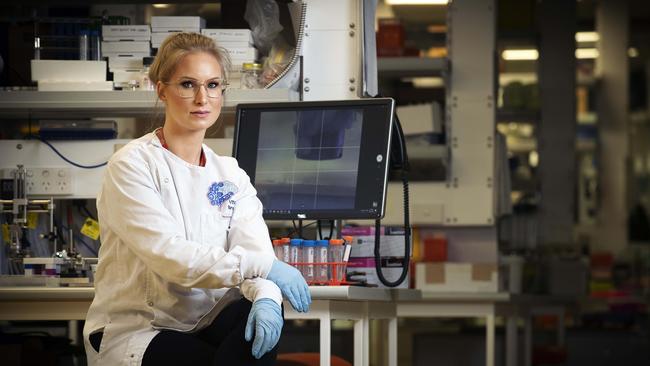Top Australian scientists changing the world
Australia’s research sector is in “crisis”, with some calling it a “war zone”, as the nation as been ranked the worst in the world for the way it treats its scientists.
National
Don't miss out on the headlines from National. Followed categories will be added to My News.
Australia has been ranked worst in the world for the way it treats its scientists, who are being paid the same as garbage sorters and less than house painters, construction workers and miners.
Researchers with masters degrees and PhDs are employed on insecure 12 month contracts and must fight each other for scarce research grants.
Jobs advertised on Seek’s employment website show research assistants and medical scientists are lucky to earn between $36 and $38 an hour.
This compares with the $42-$49 an hour a house painter can earn and the $34.99 someone gets sorting garbage at a waste collection service in Parramatta, Sydney.
And the Australian Bureau of Statistics lists miners as earning $63.90 an hour on average, construction workers getting $40 an hour and retail workers, $31.
Science journal Nature last year ranked Australia among the worst in the world for its treatment of scientists — alongside Spain and Brazil — and 21st in the OECD in terms of our funding of science.
Just 37 per cent of scientists in Australia felt positive about their prospects compared to 52 per cent in the US, 50 per cent in China, 57 per cent in India, 38 per cent in Spain and 33 per cent in Brazil.
More than half (53 per cent) of Australia’s scientists said they did not have enough funding for their research.

Dr Lila Landowski, of the University of Tasmania, said there “was no sugar coating it, the sector is in crisis”.
“I’ve probably seen about 15 colleagues leave in the last couple of years,” said Dr Landowski, who is also director of the Australian Society for Medical Research.
“If you only have a one in 10 chance of getting funding. It doesn’t take many years of not getting funding for you to not want to be a researcher anymore.
“We aren’t just losing people at the start of their careers, we are losing them at the top – haemorrhaging decades of knowledge, expertise and mentorship.”
A survey of 1400 Australian scientists by Science and Technology Australia and Professional Scientists Australia found one in five respondents (19.9 per cent) intended to leave the profession permanently.
Eureka Prize recipient Professor Ben Boyd left Australia after being awarded $11 million in late 2020 to take his gut health-related research to Denmark.

Asthma and immunobiology researcher Anthony Bosco also departed last year, after more than two decades of research.
He pitched his start-up to eight different Australian organisations, but could not get funding, so ended up at the University of Arizona on a seven-year contract with $1.6 million research funding.
“I feel let down, not valued by my country,” Assoc Prof Bosco said.
“My research program was very successful.
“I was very disappointed that no one was willing to support my vision.”

Dr Noushin Nasiri, who is a lecturer at Macquarie University and head of the NanoTech Laboratory, described Australia’s research funding landscape as a “war zone”, saying the “vicious cycle” of short term funding was “not very sustainable and efficient”.
In the past year, Dr Nasiri applied for at least three major grants to help keep younger researchers in her team employed beyond their PhDs.
Science and Technology Australia chief Misha Schubert said a key reason scientists were bailing was the short term work contracts, which last an average of just 18 months.
Scientists who want to pursue research must fight every year for grants to fund their work.
The National Health and Medical Research Council (NHMRC) and the Australian Research Council provides $1.6 billion in grant funding each year.
In 2021, applications for grants from the National Health and Medical Research Council had a 9.8 per cent success rate.




